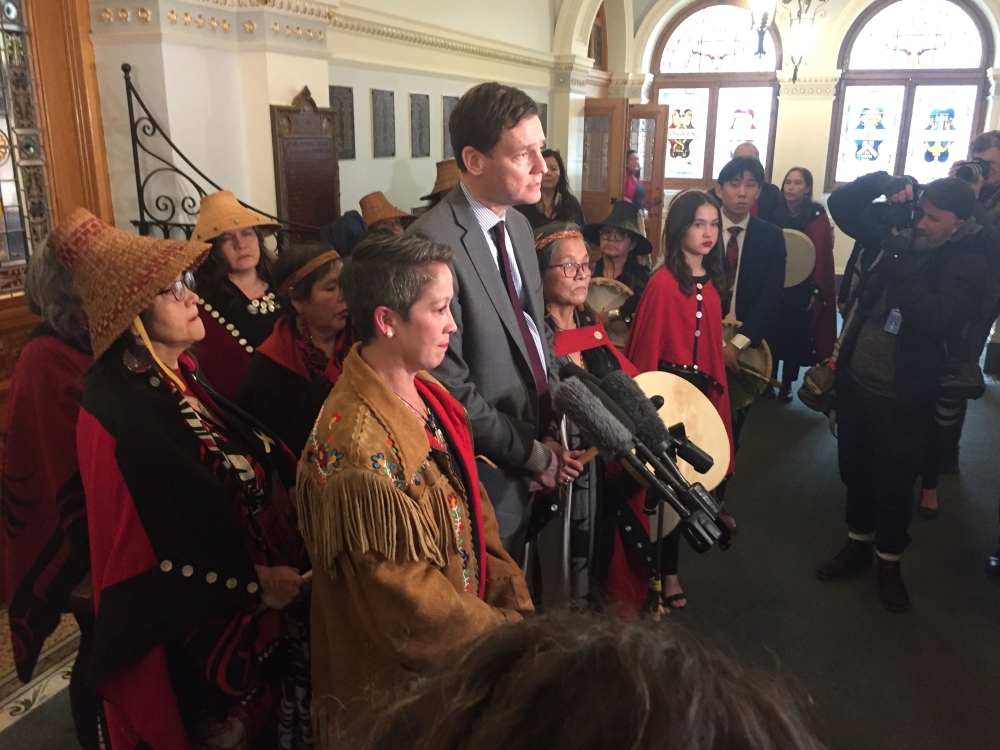In the first few months of 2023, two notable women leaders announced their exits from the global political stage: New Zealand Prime Minister Jacinda Ardern and First Minister of Scotland Nicola Sturgeon.
The reasons for their resignations vary, but both leaders faced sexism, threats and harassment, and that likely played roles in their decisions. Their departures serve as a reminder that even when women ascend the highest rungs of power, they face gendered obstacles that make it challenging for them to perform the duties expected of them as public officials.
Scholarship has identified the barriers women and racialized people face accessing political office, including in political parties, electoral systems and media coverage of their candidacies.
Creating more equitable, inclusive parliaments means not only recruiting a more diverse pool of political aspirants; it also means that once elected, public officials (and their staff) will be assured safe workplace conditions while doing their jobs.
What do women, especially racialized women, face after they win an election and begin working in Canada’s legislatures, particularly Parliament?
The first reality they will confront is a predominately white, male-dominated workplace. Today, 70 per cent of House of Commons seats are held by men, and 84 per cent of MPs are white. Women, especially women who identify as Indigenous, Black or people of colour, along with LGBTQ2S+ people, people living with disabilities and young people, are still underrepresented in the House of Commons relative to Canada’s population. Once inside Parliament, women politicians are not promoted to higher-status positions such as house leaders, party whips, caucus chairs and committee chairs at the same rates as men. When they do hold these positions, they don’t serve as long as men.
MPs experience Canada’s House of Commons as a highly gendered environment in other ways. Parliamentary debates are frequently characterized by adversarial and combative communication styles, where those who can shout the loudest and score more political points against their opponents win.
A study by Cheryl N. Collier and Tracey Raney shows that sexism and sexual harassment remain problems in most Westminster parliaments, including in Canada. Some changes have made the House of Commons more gender-sensitive, including the adoption of paid parental leave for MPs in 2019. Still, its workplace culture remains dominated by masculinized norms and practices and continues to be a gender- and diversity-insensitive space.
This masculinized blueprint is a shared trait of many legislatures, reinforcing white men’s advantages and power inside of them. A workplace that tolerates sexist, racist norms and behaviours is unfortunately not one that can retain diverse leaders. In 2021, in her farewell speech MP, Mumilaaq Qaqqaq stated that she never felt safe in the House of Commons, referring to it as a “colonial house on fire.” In her resignation speech from provincial politics last month, Melanie Mark — B.C.’s first First Nations woman to serve as an MLA — described the legislature as a “torture chamber.” Change is clearly needed in legislative workplaces countrywide.
What reforms would make parliaments more inclusive?
Using a gender-sensitive framework and an intersectional approach gives us some of the necessary tools to create more inclusive legislative workplaces. In her research, Jeanette Ashe recommends that reforms be guided by four dimensions: equality of participation, infrastructure, culture and policy.
To begin, parliaments need to address their overrepresentation of white, heterosexual, cis-gendered, older men by empowering those who are underrepresented. New ways of “doing” politics that challenge settler colonialism and patriarchal values — rather than perpetuating them — need to be central to institutional reform discussions.
Recently, Conservative MP Michael Chong proposed three institutional reforms that if implemented would broaden MPs’ opportunities to participate in debates and committees. These include allowing the Speaker to call on any MP who rises to speak (rather than parties controlling speaking opportunities), and removing the prime minister’s power to name key parliamentary officers such as the clerk of the House of Commons. The clerk is the chief administrative officer of the House and reports to the Speaker. The office of the clerk has considerable power in the House and is responsible for interpreting parliamentary rules, precedents and practices.
Chong’s recommendations also include allowing committee chairs to be selected by secret ballot, reducing the ability of the prime minister and party leaders to choose who would fill these roles. Chairs serve as the presiding officers of committees, and are responsible for recognizing members and calling witnesses. They are also responsible for maintaining order and decorum in committee proceedings. Together, these reforms are intended to recalibrate existing power imbalances between party leaders and backbench MPs to make Parliament more accountable to the public.
Applying a gendered, intersectional approach to these ideas raises questions about who would stand to benefit the most from them. Chong’s proposal that members should individually “flag” the Speaker’s attention to participate in debates could, for example, reinforce masculinized, aggressive styles of behaviours described above. Members who are not able to shout the loudest or wave their arms the wildest over the din of the chamber, including those living with disabilities, may be additionally disadvantaged, and less able to draw the Speaker’s attention compared with other politicians.
There is also no guarantee that decentralizing the election of committee chairs to MPs would improve women’s representation in and participation on committees, especially on higher-status committees. Rather, if left in the hands of MPs through a secret ballot process, this reform could lead to a decrease in women’s representation as committee chairs.
Studies from the U.K. and Canada suggest that greater centralization in the form of gender quotas for women chairs is needed to help break free of the historical white male status quo in parliamentary committees. The PM’s appointments of gender-balanced cabinets and women to the Senate have established precedents for informal gender quotas in Canada’s executive and upper house, with the House of Commons now a representational laggard.
Finally, Chong suggests the election of chairs will lead to greater collegiality amongst MPs, but members who are men already disproportionately benefit from behind-the-scenes deal-making. Our concern with this idea is that it might exacerbate the masculinized culture of politicians’ jockeying for key positions, leaving others to watch from the sidelines.
One way to ensure more inclusive participation in House activities is to assign to the Speaker formal responsibility to oversee the implementation of gender equality in the House. For example, the Speaker could work to establish gender quotas for committee chairs and for membership on powerful committees.
Parliament’s infrastructure and timetable are also in need of gender-sensitization. Job sharing and ending night sittings would help, while a hybrid option where some legislature proceedings are held virtually should be explored. Allowing proxy voting for MPs who are absent from Parliament because of caregiving responsibilities would also be beneficial.
Returning to the important role of the Speaker again, they must also help uphold parliamentary decorum. Women politicians, especially those who are racialized, have reported that heckling in debates is sometimes focused on their gender, race and physical appearances. Sexist, racist and homophobic language or gestures should be recognized as unparliamentary in the standing orders.
Addressing Parliament’s masculinized culture requires the adoption of a firm, zero-tolerance approach to race- and gender-based violence and harassment. Despite a 2015 MP code of conduct on sexual harassment and the adoption of a 2021 anti-violence policy for MPs’ employees, neither is fully independent, leaving sanctioning decisions in the hands of politicians.
In the U.K., an independent expert panel was established in 2020 to determine sanctions and appeals in bullying, harassment and sexual misconduct cases involving MPs. Although the U.K. process has its own share of problems, Canada should look closely at the IEP to develop a more independent sanctioning process in similar cases.
Finally, an inclusive Parliament can only be achieved when decision-makers embrace a longstanding commitment to gender equality. Formal recognition of the need to gender-sensitize Parliament and the adoption, through the Speaker, of recurring gender-sensitive audits are needed. A gender-sensitive parliamentary audit would allow for regular analyses of Parliament’s work as a whole, including of members’ participation in debates, question period, committee proceedings, and of the selection of key leadership roles inside the legislature, such as committee chairs.
In 1970, the Royal Commission on the Status of Women in Canada called for a correction to the “present imbalance between the participation of women and of men in public life.” More than a generation later, many of Canada’s legislatures remain imbalanced, with white men overrepresented relative to their share of the population. Reforming Canada’s Parliament to attract and retain more diverse leaders would send a powerful message to the country and the world that our commitments to equity and inclusivity begin at home and start today. ![]()
Read more: Rights + Justice, Federal Politics, Gender + Sexuality


















Tyee Commenting Guidelines
Comments that violate guidelines risk being deleted, and violations may result in a temporary or permanent user ban. Maintain the spirit of good conversation to stay in the discussion.
*Please note The Tyee is not a forum for spreading misinformation about COVID-19, denying its existence or minimizing its risk to public health.
Do:
Do not: